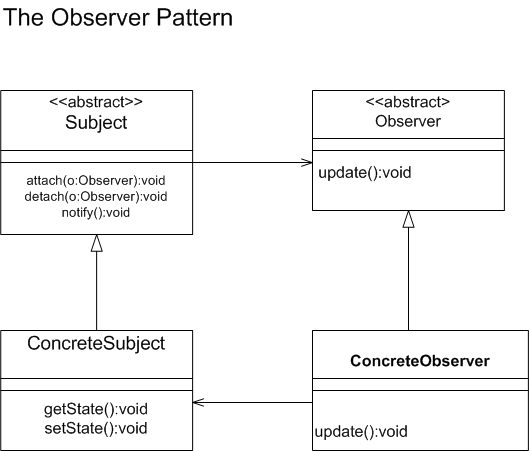The Role of the Observer Pattern within the Context of Behavioral Design Patterns
Within the pantheon of software design patterns, behavioral design patterns occupy a crucial space, delineating the manners in which objects interact and the responsibilities they should undertake. Among these, the Observer Pattern emerges as a seminal concept, characterized by its efficacy in establishing a one-to-many dependency between objects, such that when one object changes state, all of its dependents are automatically notified and updated. This essay will examine the role of the Observer Pattern within the broader context of behavioral design patterns, elucidating its significance, operations, and implications.
- Definition and Structure:
The Observer Pattern, often synonymous with the Publish-Subscribe model, primarily comprises two entities: the 'Subject' and the 'Observer'. The Subject maintains a list of Observers and provides mechanisms to add, remove, or notify them. The Observers, on the other hand, provide an interface to update themselves in response to changes in the Subject. The binding architecture ensures that all registered Observers are apprised of state changes in the Subject. - Delineation from Other Patterns:
The crux of behavioral patterns is to define clear pathways of communication between objects. While other patterns, like the Strategy Pattern, emphasize algorithmic encapsulation or the Command Pattern that encapsulates a request as an object, the Observer focuses on dynamic state change propagation. Its essence is the automatic propagation of changes from one object to multiple recipients without needing to know who or what those recipients are, ensuring a decoupling of the principal components. - Significance and Implications:
- Decoupling: One of the salient features of the Observer Pattern is its ability to promote the decoupling of the Subject from its Observers. The Subject remains agnostic of who its Observers are, thus ensuring modularity and flexibility. This decoupling is pivotal in scenarios where modifications to one module should not necessitate changes to others.
- Dynamic Relationships: Observers can be added or removed at runtime, allowing for dynamic relationships. This is pivotal in systems where the number of observers is not known a priori or is subject to change.
- Broad Cast Mechanism: The pattern provides an efficient mechanism to broadcast changes to multiple recipients, ensuring that all interested parties receive updates.
- Potential Challenges:
Like all design patterns, the Observer Pattern is not without its challenges. The broad broadcasting can lead to unintended side effects or cascading updates. Moreover, there's a potential for introducing circular dependencies if not implemented judiciously. Additionally, if not managed properly, the lingering references to observers can lead to memory leaks. - Applications:
The Observer Pattern is ubiquitous in contemporary software systems. From event management systems in GUI libraries where widgets update in response to user actions, to real-time data monitoring platforms that need to alert multiple services upon data anomalies, its footprint is indelible.
The Observer pattern provides a way for a component to flexibly broadcast messages to interested receivers.
It defines a one-to-many dependency between objects so that when one object changes state, all its dependents are notified and updated automatically. The Figure below illustrates the Observer pattern.

Benefits of the Observer Pattern:
The following lists the benefits of using the Observer pattern:
- Abstract coupling between subject and observer
- Support for broadcast communication
When to Use the Observer Pattern:
You should use the Observer pattern when:
- A change to one object requires changing the other object and you do not know how many objects need to change.
- An object should be able to notify other objects without making assumptions about the identity of those objects.